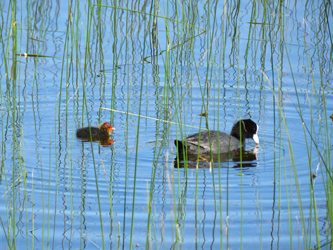The importance of waterbirds as vectors of aliens has been recognized since Darwin's time, yet research by pioneers has been forgotten during the development of modern invasion biology, which tends to overlook this means of dispersal. Waterbirds are ignored in databases of alien species and invasion pathways, making management and prevention of invasions more difficult. This article summarizes studies that provide empirical evidence for the dispersal of alien plants and invertebrates by waterbirds in aquatic and terrestrial ecosystems. Altogether, 36 studies provide empirical evidence for the dispersal of 79 alien plant species and eight alien invertebrates by waterbirds, including some of the worst aquatic invaders and the most widely distributed alien terrestrial plant species. Waterbirds known to be vectors include ducks, geese, swans, shorebirds, gulls, herons and rails. Aliens are usually dispersed after being ingested or becoming attached to plumage, bills or feet, but waterbirds also disperse alien species when making nests, when preying on other vectors such as fish, or even attached to leg rings. While waterbirds may have a trivial role in explaining the arrival of alien species to new continents, they have a vital role in spreading aliens around once they get there. Greater focus on the role of waterbird vectors is essential if management of invasions is to be effective. informacion[at]ebd.csic.es: Green (2016) The importance of waterbirds as an overlooked pathway of invasion for alien species. Diversity Distrib 22: 239-247 DOI: 10.1111/ddi.12392
http://onlinelibrary.wiley.com/doi/10.1111/ddi.12392/full








 Open Call for Research Projects in ICTS-Doñana!
Open Call for Research Projects in ICTS-Doñana!


